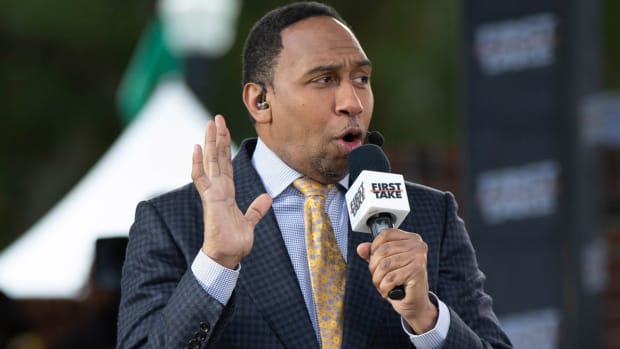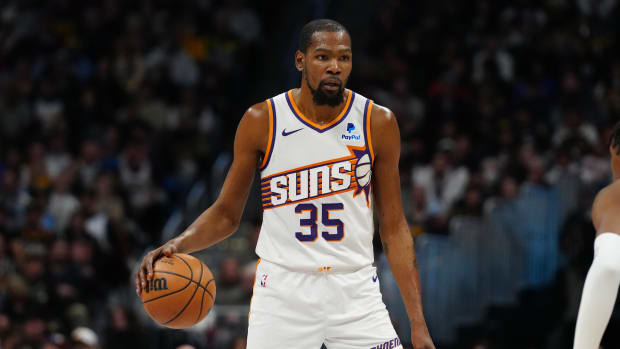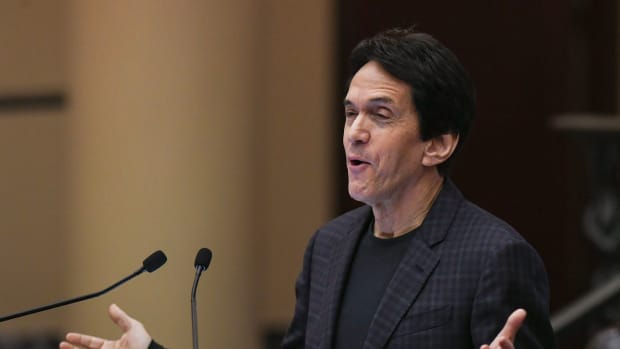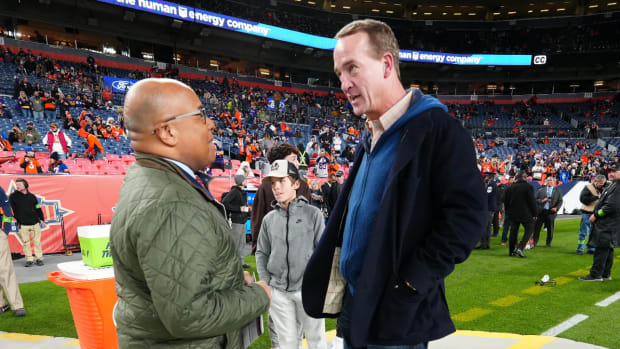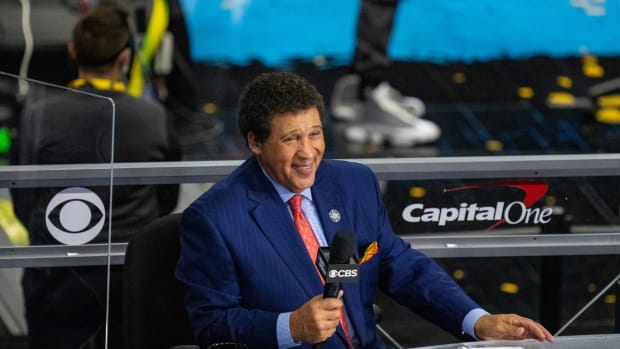Reviewing ESPN’s Latest Experimental Broadcast, Full Court Press
As LeBron James dribbled upcourt six minutes into Friday’s Lakers–Bucks game, red flooded the screen. Not on ESPN’s primary telecast, but on the company’s experimental Full Court Press digital feed. An error message appeared. White text in a black box. 9261OG-00152 No data present. And, for a moment, the future of basketball broadcasting was put on hold. “This is very exciting,” host Adam Amin said.
ESPN has been playing with second-screen experiences for years, but the attempts now carry more weight. Last year, a stats-centered MLB broadcast “drew rave reviews.” In January, Monday Night Football talent hosted an alternative presentation of the college football title game as part of a multi-channel MegaCast. Most recently, MegaCast leader Ed Placey was named “content innovation lead” in February, coinciding with a renewed emphasis across production teams.
This all comes as ESPN president Jimmy Pitaro has made the i-word one of his four key areas of focus, for obvious reasons. NBA commissioner Adam Silver laid them plain on stage at a sports analytics conference on Friday. Speaking with Bill Simmons, Silver said young people “don’t even subscribe to pay TV anymore,” he highlighted the difficulty of “competing against an infinitesimal number of opportunities for people to do other things with their time,” and then he talked about the broadcasts themselves.
“If you think about how our games are going to look five years from now, my belief is it will be dramatically different,” Silver said. “It’s one place where there has been very little innovation.”
Hours later, Amin went live with analysts Tom Thibodeau, Kirk Goldsberry, and Zach Lowe. The online show, featuring live visualizations from computer intelligence company Second Spectrum, did not meet the standard set during the MLB Wild Card game, but ESPN still demonstrated the potential of modern sportscasting.
The show bounced between three different viewing modes: a Coach Mode that documented schematic movements, a Player Mode that showed how likely each man was to score from where they stood, and a Mascot Mode that featured fanciful animations in celebration of whatever transpired on-court. “It’s fun and different,” NBA senior coordinating producer Tim Corrigan said afterwards. “It’s a unique experience.”
Rather than being geared towards casual fans who want to see NBA Jam-style graphics or statheads yearning for a numbers-heavy picture, the result seemed aimed at the significantly smaller segment interested in both.
ESPN host Ryen Russillo has hailed the experience of sitting next to Thibodeau during a game, listening to him break down defensive gameplans. Fans got a taste of that Friday, but Coach Mode mainly auto-diagrammed offensive movements, meaning it often distracted from the point Thibs was making.
Late in the second quarter on the main broadcast, Doris Burke was pointing out the benefits of Brandon Ingram’s defensive reach and offensive release point. Then Ryan Ruocco called a reverse-putback dunk from James. “The crowd is still reverberating with awe,” he said moments later. Meanwhile, the Full Court Press quartet was maligning Mascot Mode for not duly recognizing the slam. On replay, the analysis stayed surface level. “Great effort,” Thibodeau said. The group handled Giannis Antetokounmpo’s early fourth-quarter dunk better, with Goldsberry waving his hands at the screen.
At its worst, the special presentation felt like a Second Spectrum infomercial. Maybe it was. Asked about the company’s financial support for the show, Corrigan said, “You know, everybody has skin in the game.” That would explain why the the player-tracking technology sometimes hijacked rather than enhanced the conversation. Otherwise, producers generally avoid technology for its own sake.
Those low moments suggest that wonky telecasts should be left to ballparks, where numbers drive conversation. In the NBA, highlights and drama rule. But Goldsberry and Lowe—along with Amin and Thibodeau—could offer plenty.
While special stats ran along the bottom of Friday’s broadcast, advanced graphics could be worked into the broadcast more deeply. Rather than sharing James and Antetokounmpo’s points, rebounds, and assists midway through the third quarter, what were their offensive and defensive ratings? Or their usage and true shooting numbers? Alternatively, Goldsberry’s trademark shotmaps could have shown fans how their games have evolved throughout their careers. During that James/Giannis comparison segment, Goldsberry threw out the factoid that James has assisted on more three-pointers than anyone this decade during a discussion of how well those playmakers create shots for others. Unfortunately the clips at that point only showed the stars making shots themselves.
Some of Goldsberry’s best comments Friday came discussing the merits of certain long-twos based on both his research and his time in San Antonio. (In the name of transparency by way of humblebrag, Goldsberry was a college professor of mine.) On a traditional broadcast, that talk likely would’ve gotten squished into a good shot-bad shot dichotomy. Lowe’s columns are littered with Second Spectrum findings, including references to the spacing numbers that are altering the game at a fundamental level. They might be less flashy to demonstrate, but they could be used in a broadcast to explain the action rather than just augmenting it.
In a fan-friendly move, the broadcast stayed live through several traditional commercial breaks. That said, the time could have been better spent giving Lowe a chance to delve deeper into the in-game breakdowns he provided on the Bucks’ rotational decisions and various strategic quirks.
Those shortcomings and missed opportunities aren’t dings on the broadcast. They’re the point. “You’ve got to take some chances and really put something out there to learn and fine tune,” Corrigan said, adding that his team is “gearing towards doing more” experimental broadcasts soon. “We’re just trying so we can get learnings and get better at this.” Wrapping up at the end of the game, Lowe said, “This is, again, just scratching the surface.”
The show’s best feature involved producers using a specific camera angle and green-screen technology to superimpose the four commentators on top of the game, despite them calling it from across the country in Bristol, Conn.
Bodies would pop up on cue when an analyst made a point. During group discussions, four visages lined the bottom of the screen. The look will be instantly familiar to Twitch users. For everyone else, it is a taste of the future.
